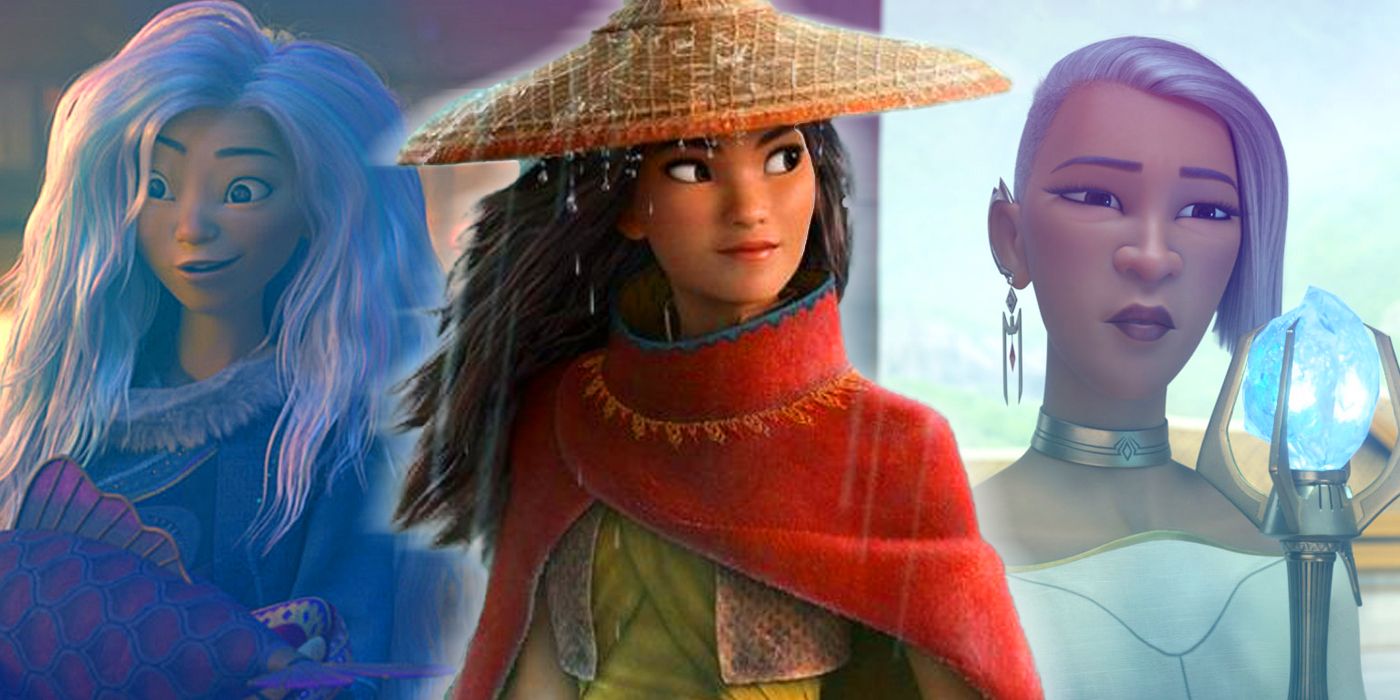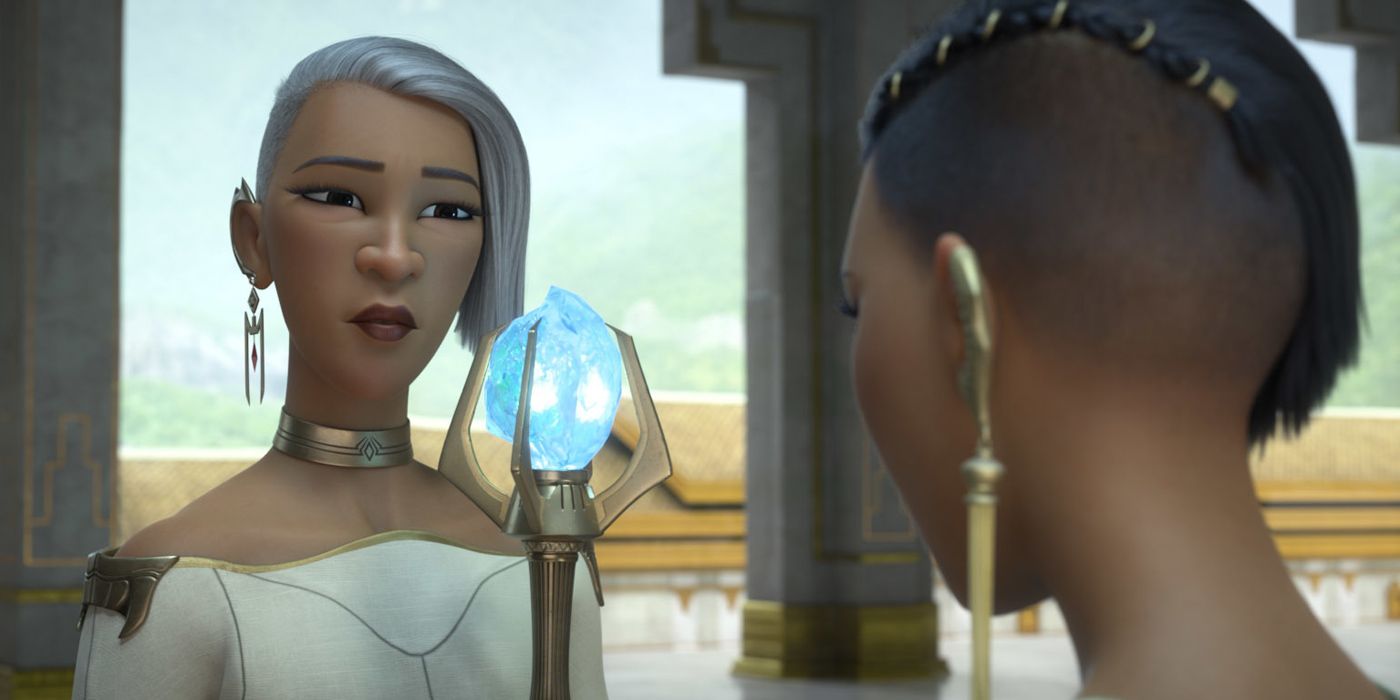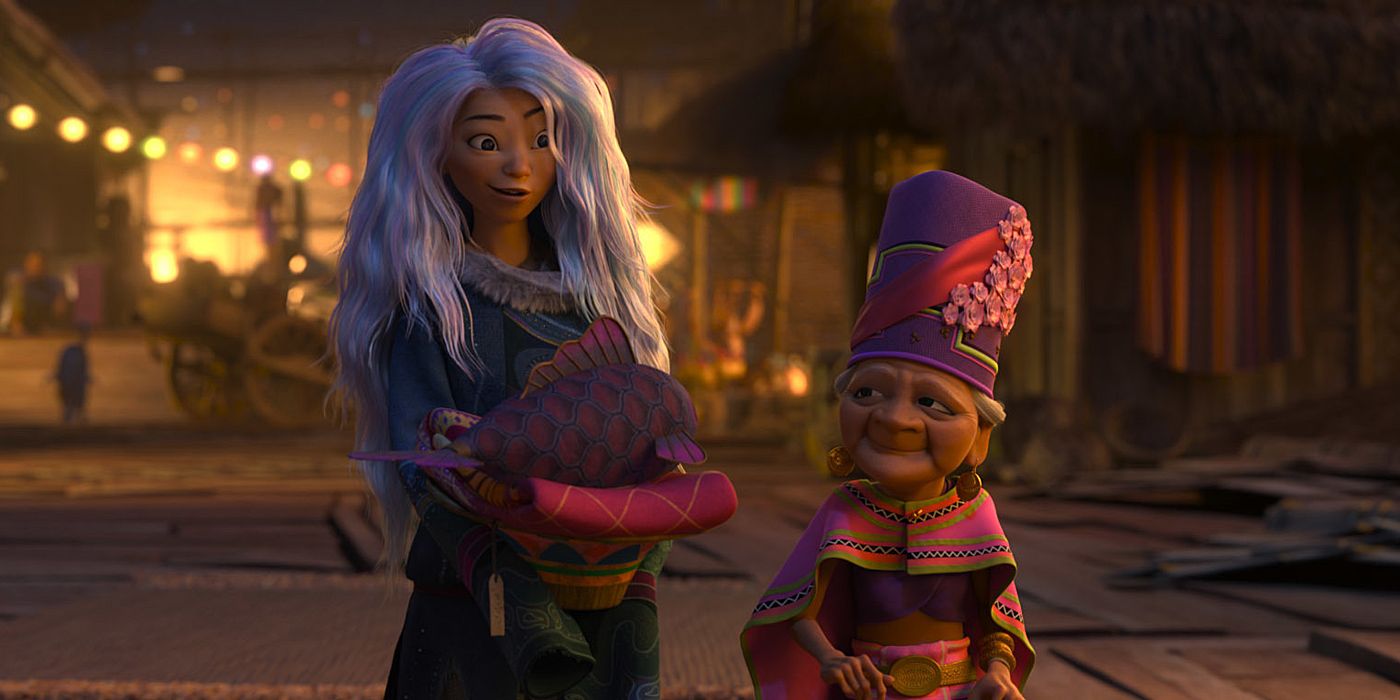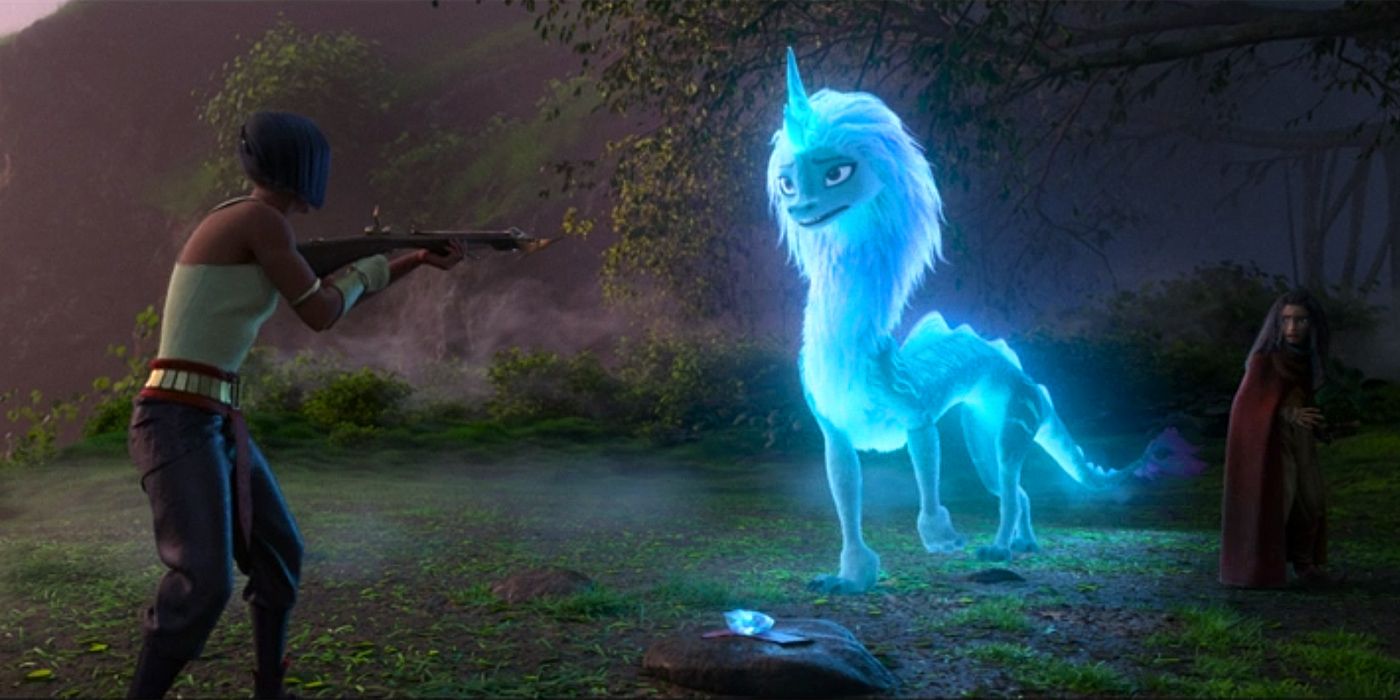WARNING: The following contains spoilers for Raya and the Last Dragon, now playing in theaters and on Disney+.
Disney's princess movies have been a staple of family entertainment for decades. Although early movies have been criticized for making princesses too passive in their own stories, later films have made great strides to correct this by having newer princesses become their own heroes. Nevertheless, Disney's latest princess movie, Raya and the Last Dragon, takes this a step further by creating an entire world full of powerful women and centering its story on relationships between multiple female characters. The film also does all of this without drawing attention to it or tooting its own horn.
Raya and the Last Dragon takes place in the fictitious, Southeast Asian-inspired world of Kumandra. The world is split into five distinct regions that each have their own unique ways of life as well as their own separate chiefs, several of whom happen to be women. The movie implies that leadership is generally passed from parent to child, and it appears that leaders do not have to be a certain gender to rule. Because of this, both Raya and Namaari are princesses being trained to take their parents' places.
Additionally, each land has its own warriors who can be male or female. One of the most prominent groups is Fang's royal army, which is headed by another female leader, General Atitaya. Not every group gets to show off their fighting skills, but the ones that do are all formidable opponents. Even Little Noi has some impressive moves, and she can't even speak in full sentences yet.
Not only are there so many women in places of power, this fact is also never questioned or brought up to begin with. There are no backstories presented about women having to rise up against a patriarchal society to claim these positions or having to fight to keep them. Instead, women are simply allowed to be chiefs, generals, warriors and whatever else they choose to be. In this way, Raya and the Last Dragon quietly normalizes the idea of female leadership and female warriors.
In addition to being powerful, all of the women in Raya and the Last Dragon are complex characters, with their own beliefs, motivations and flaws. For example, both Chief Verana of Fang and Chief Dang Hu of Talon do questionable things in the name of their respective tribes. Chief Verana has her daughter befriend and betray young Raya in order to steal the Dragon Gem and Chief Dang Hu threatens to feed Sisu to the Druun if she doesn't give up the location of the other Dragon Gem pieces. At the end of the day, both are trying to do what is best for their people. They just don't go about it in the best way. The same can also be said of Tail's chief, who died while she was setting up traps around her piece of the Dragon Gem, or even Little Noi, who became a con baby after her family was turned to stone.
Out of all these women, Raya, Sisu and Namaari are the most complicated and their relationships with each other make up the heart of this narrative. First, there's Raya and Namaari, who start off as potential friends but become nemeses when Namaari betrays Raya and tries to steal the Dragon Gem. The Gem is fractured in the conflict, leading to the Druun's return. This experience shapes Raya's entire worldview, giving her such a deep mistrust of others that she won't even eat food prepared by someone else for fear of being poisoned. Ultimately, it is this same rift that has to be healed in order to restore the Dragon Gem and vanquish the Druun.
Next, there's Raya and Sisu, who work together to save the world but don't always agree on how to do it. Throughout their journey, Sisu tries to teach Raya to have faith in her fellow humans despite Raya's expectations often proving to be right. Finally, there's Sisu and Namaari, who start off on opposite sides before Sisu decides to trust the rival princess. As a dragon with a very different perspective, Sisu is able to recognize Namaari's humanity and her desire to do the right thing. Because of this, Sisu becomes the bridge between Raya and Namaari, eventually leading them to come together and save the world.
Raya and the Last Dragon may not be the first Disney princess movie to show female leaders and warriors or to focus on relationships between women, but it does so in a way that is refreshingly subtle. Whereas other Disney movies tend to point out when their characters are breaking with traditional gender norms either in the movie itself or in its marketing, Raya and Namaari both get to be amazing warrior princesses and it's treated as normal. For some, seeing women depicted in this way can be just as impactful as seeing them smash the patriarchy.
Directed by Don Hall and Carlos López Estrada from a script by Adele Lim and Qui Nguyen, Raya and the Last Dragon stars Kelly Marie Tran, Awkwafina, Gemma Chan, Daniel Dae Kim, Sandra Oh, Benedict Wong, Izaac Wang, Thalia Tran, Alan Tudyk, Lucille Soong, Patti Harrison and Ross Butler. The film is now playing in theaters and on Disney+ Premier Access.




